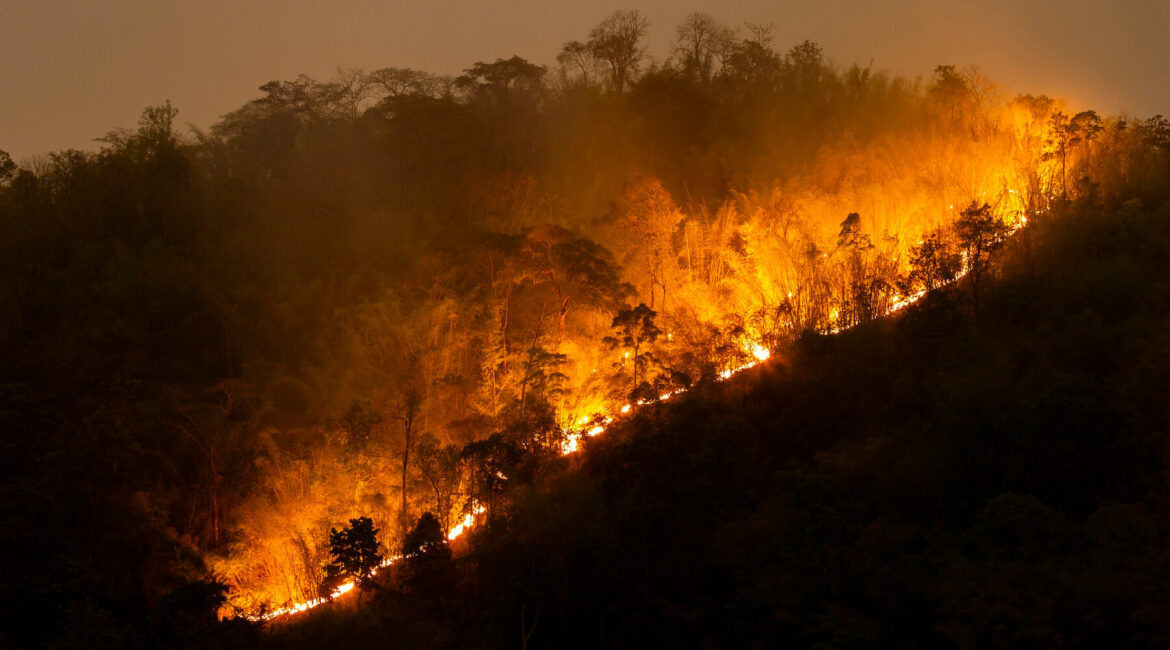Forest fires in Brazil, particularly in the Amazon, are a growing concern with far-reaching consequences for the planet. In 2024, over 110,000 wildfires were reported, a staggering 116% increase compared to the previous year. These fires have burned approximately 114,000 square kilometers of forest, releasing more than 183 megatons of carbon dioxide into the atmosphere by September alone. The causes are multifaceted, ranging from land clearing for agriculture to exacerbated natural phenomena like El Niño and prolonged droughts.
Carbon Emissions and Global Warming
When forests burn, they release stored carbon dioxide, significantly contributing to the greenhouse effect. In 2024, Brazil’s fires became the largest source of carbon emissions from wildfires globally. This sudden release accelerates global warming, as the excess CO₂ traps heat in the atmosphere. Moreover, the loss of forest cover diminishes the Amazon’s role as a carbon sink, further compounding climate change. This dual impact—immediate carbon emissions and reduced absorption capacity—poses a severe threat to global efforts to mitigate climate change.
Disruption of Regional and Global Weather Patterns
The loss of Amazonian forest cover doesn’t just impact carbon levels; it also disrupts weather systems. The “flying rivers” that originate in the Amazon are a critical source of rainfall for South America. When forest cover declines, these atmospheric water flows weaken, leading to reduced precipitation and prolonged droughts. This has severe implications for agriculture, water supply, and energy production in Brazil and neighboring countries. Additionally, these disruptions can contribute to extreme weather events, such as hurricanes and floods, in other parts of the world.
Biodiversity Loss and Ecosystem Collapse
Beyond climate implications, the fires pose a grave threat to biodiversity. The Amazon is home to about 10% of the world’s known species, many of which are found nowhere else. Fires destroy habitats, push species toward extinction, and disrupt ecological balances. This loss of biodiversity weakens the resilience of ecosystems, reducing their ability to adapt to environmental changes and recover from disasters. Healthy ecosystems are crucial for providing services such as pollination, water filtration, and disease regulation, all of which are essential for human well-being.
The Path Forward: Sustainable Solutions
Addressing the forest fire crisis requires a multifaceted approach. Strengthening enforcement of environmental regulations and promoting sustainable land use practices are essential to prevent illegal deforestation and uncontrolled burns. Reforestation projects must be scaled up, with a focus on restoring native ecosystems and involving local communities in conservation efforts. Additionally, international cooperation is vital to ensure sufficient funding and technical support for climate adaptation and mitigation initiatives.
On a broader scale, combating climate change will require systemic changes in energy, agriculture, and industry. Reducing global dependence on fossil fuels, adopting climate-resilient agricultural practices, and enhancing carbon sequestration through natural and technological means are critical steps. Public awareness and advocacy also play a crucial role in driving policy changes and holding governments and corporations accountable.


